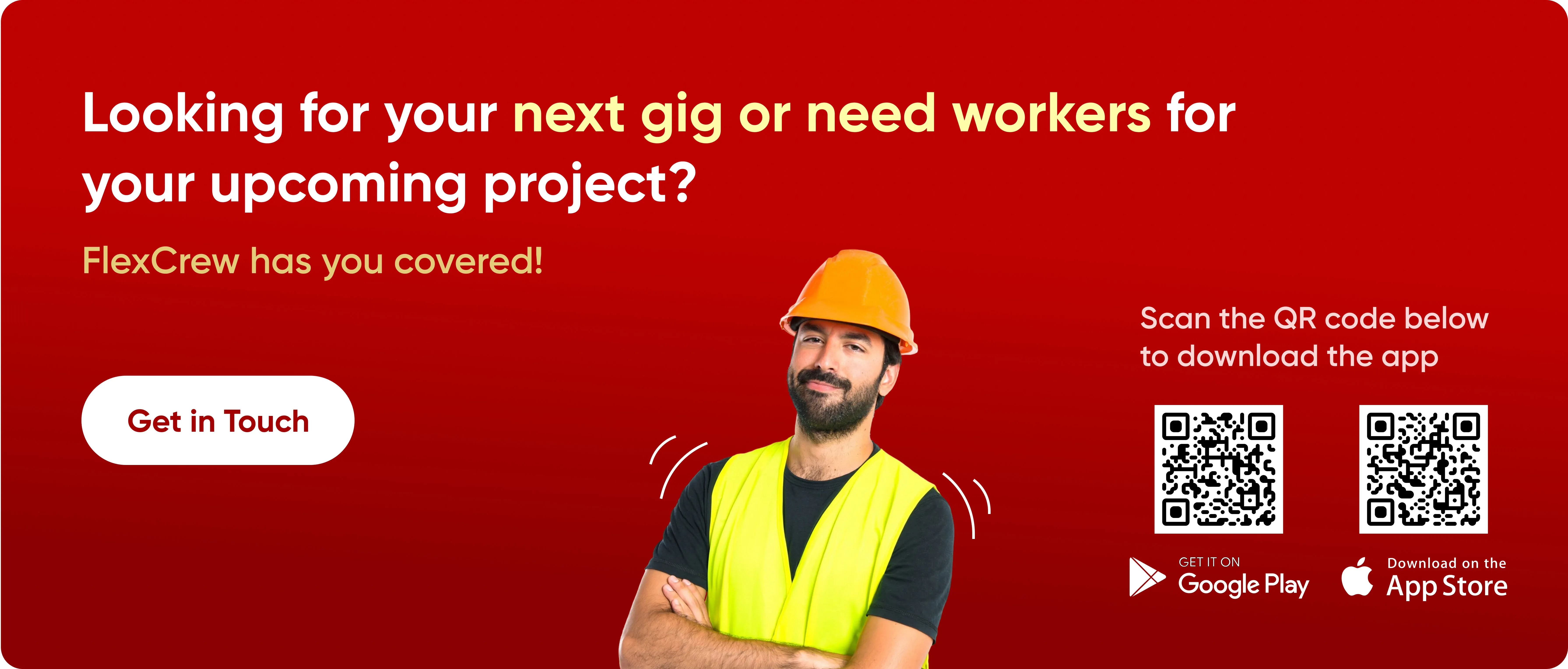You're bleeding money on every project. Workers standing around waiting for materials. Schedules that change every single day. Safety incidents piling up. If you're nodding your head right now, you're not alone—70% of construction companies can't find enough workers, and most are scrambling to manage the ones they have. Labor management isn't just paperwork and timesheets anymore. It's the difference between hitting your deadlines and watching your profit margins disappear.
What Is Labor Management and Why It Matters Right Now
Labor management is how you organize, schedule, track, and optimize your workforce to get projects done on time and under budget. Think of it as the GPS for your entire team knowing who's where, what they're doing, and how to shift people around when things go sideways.
Here's the deal: construction projects burn through 60-70% of their budget on labor costs alone. When you nail labor management, you control your biggest expense. When you don't, you're flying blind with your wallet wide open.
The construction industry needs 501,000 additional workers beyond normal hiring just to keep up with demand in 2025. That's not a typo. Meanwhile, over 41% of current workers will retire by 2031. Companies that master labor management today will survive. The rest? They'll be fighting over scraps.

The Real Cost of Poor Labor Management
Bad labor management isn't just annoying—it's expensive as hell. Here's what actually happens when you wing it:
Project Delays Everywhere: Small scheduling mistakes snowball fast. One crew shows up late, and suddenly your entire timeline shifts. That delay hits the next phase, then the next. Before you know it, you're three weeks behind and clients are threatening to pull out.
Safety Incidents Spike: Fatigued workers make mistakes. When you're not tracking hours properly or pushing crews too hard, accidents happen. Beyond the human cost, you're looking at workers' comp claims, OSHA fines, and project shutdowns.
Money Walking Out the Door: Idle time kills profits. Workers standing around because materials didn't show up or the schedule got messed up? You're still paying them. Union protections mean boots on site equals money spent, whether they're working or waiting.
Good People Leave: High turnover isn't just about finding new workers—it's about losing the knowledge and experience that keeps projects moving. Training new hires costs money and time you don't have.
5 Labor Management Strategies That Actually Work
1. Track Time Like Your Business Depends On It (Because It Does)
Ditch the paper timesheets and clipboards. Smart time tracking with mobile apps or biometric systems gives you real-time visibility into who's working, who's not, and where you're bleeding hours. Automated systems cut payroll errors by up to 80% and stop time theft before it becomes a problem.
Pro tip: Use GPS-enabled time tracking for multi-site projects. You'll know exactly when crews arrive and leave each location.
2. Schedule Smarter, Not Harder
Manual scheduling is like playing chess blindfolded—you're gonna lose. Automated scheduling software assigns workers based on skills, certifications, and availability. When weather delays hit or equipment breaks down, the system adjusts in real-time and notifies everyone instantly.
Build buffer time into every schedule. Historical data shows where delays usually happen. If electrical work typically runs two days behind, plan for it upfront instead of scrambling later.
3. Invest in Your Current Crew
Stop constantly hunting for new workers and develop the ones you have. Cross-training creates flexibility. When your concrete finisher can also handle basic carpentry, you're not stuck waiting for specific specialists.
Offer clear career paths. Young workers want to see where they're going. Show them how they can move from apprentice to journeyman to supervisor. Partner with trade schools and create formal apprenticeship programs.
Need help building a stronger resume for career advancement? FlexCrew USA's AI resume builder helps construction professionals showcase their skills and certifications in minutes—making it easier to attract and retain top talent.
4. Use Technology to Fill the Gaps
Construction tech isn't just fancy toys—it's survival equipment. Here's what's actually working right now:
- Mobile apps for instant communication between field and office
- Drones for site inspections that used to take hours
- AI-powered tools that predict labor needs based on project phase
- Wearable safety devices that alert supervisors to dangerous conditions
These tools let your existing crew accomplish more with less wasted motion and fewer mistakes.
5. Plan for the Unexpected (Because It Always Happens)
Flexibility beats perfection every time. Weather, supply chain issues, permit delays—something will go wrong. Build contingency plans that let you shift workers between projects quickly.
Keep a bench of qualified contractors you can call on short notice. Document lessons learned from every project so you're not solving the same problems twice.
Labor Management in Construction: Special Challenges
Construction throws curveballs that other industries don't deal with:
Multiple Worksites: Managing crews across different locations means you need visibility everywhere. Centralized systems that track all sites in one dashboard are non-negotiable.
Subcontractor Coordination: Your success depends on subs showing up when they're supposed to. Clear communication channels and shared scheduling platforms keep everyone aligned.
Compliance Nightmares: OSHA regulations, union rules, state labor laws—miss one requirement and you're looking at fines or work stoppages. Good labor management software automates compliance tracking.
Weather Dependencies: You can't pour concrete in a rainstorm. Effective labor management means having backup plans for weather delays that don't leave crews idle for days.

How Workforce Management Software Changes Everything
The right software turns labor management from a headache into a competitive advantage. Here's what to look for:
- One-click scheduling that accounts for skills, certs, and availability
- Mobile access so crews can clock in/out and update status from anywhere
- Real-time reporting showing labor costs, productivity, and utilization rates
- Compliance automation that tracks certifications, safety training, and labor law requirements
- Integration with your existing payroll and accounting systems
Modern platforms cut administrative time by 50% or more. That's hours every week you can spend actually managing projects instead of shuffling papers.
Why FlexCrew USA Gets Labor Management Right
Finding quality workers is tough enough. Managing them efficiently? That's where most companies struggle. FlexCrew USA specializes in workforce solutions that actually work for construction and industrial companies.
We don't just throw bodies at your projects. We provide skilled, vetted professionals who show up ready to work. Our AI-powered matching system connects you with workers who have the exact certifications and experience your project needs.
Plus, our AI resume builder helps your existing team members document their skills and certifications professionally. Better resumes mean easier promotion paths and higher retention rates. When your workers can see their career growth clearly, they stick around longer.
Taking Action: Your Labor Management Checklist
Ready to stop losing money on labor? Here's where to start:
✓ Audit your current process: Where are you losing the most time and money? Track one week of labor across your active projects.
✓ Talk to your team: Front-line workers know what's broken. Ask them what makes their jobs harder and what would help them be more productive.
✓ Evaluate your tech stack: Are you still using paper timesheets? Manual schedules? Calculate how much time you're wasting on administrative tasks.
✓ Set clear metrics: You can't improve what you don't measure. Track workforce utilization, overtime hours, project completion rates, and safety incidents.
✓ Start small: Pick one project as a test case for new labor management strategies. Prove the concept before rolling out company-wide.
✓ Partner with experts: Working with staffing solutions like FlexCrew USA gives you access to a broader talent pool without the overhead of full-time employees.
The Bottom Line on Labor Management
Labor management separates profitable companies from failing ones. With the construction labor shortage only getting worse and project demands increasing, you can't afford to keep doing things the old way.
Smart labor management means knowing where every worker is, what they're doing, and how to optimize their time. It means using technology to eliminate waste and reduce errors. It means investing in your current crew instead of constantly chasing new hires.
The companies winning right now aren't the ones with the most workers—they're the ones managing their workforce most effectively. Better scheduling, smarter technology, and strategic staffing solutions create the competitive edge you need.
Stop bleeding money on inefficient labor management. Start building the workforce that takes your business to the next level.
Frequently Asked Questions About Labor Management
What is labor management in construction?
Labor management is organizing, scheduling, and tracking your workforce to complete projects on time and under budget. It reduces costs, prevents delays, and keeps workers safe.
How much does poor labor management cost construction companies? Poor labor management eats up 10-30% of project costs through wasted time, scheduling errors, and turnover. Since labor is 60-70% of budgets, small inefficiencies add up fast.
What's the biggest labor management challenge in construction right now? The skilled labor shortage. Construction needs 501,000 additional workers just to meet 2025 demand, while 20% of current workers are over 55 and nearing retirement.
How does labor management software help construction companies?
It automates scheduling, time tracking, and compliance. Companies reduce admin time by 50%, cut payroll errors by 80%, and improve workforce utilization by 20-30%.
What skills do construction workers need for better labor management? Cross-training in multiple trades, digital literacy for scheduling apps, and basic project management. FlexCrew USA's AI resume builder helps workers document these skills professionally.
How do you improve workforce retention in construction?
Offer competitive wages, clear career paths, flexible scheduling, and comprehensive benefits. Companies with strong development programs see 40-50% lower turnover.
What's the difference between labor management and workforce management?
Labor management focuses on daily productivity and scheduling. Workforce management is broader—it includes hiring, training, benefits, and long-term planning.
Where can I find qualified construction workers in Texas, Florida, and California?
FlexCrew USA provides pre-screened, skilled workers nationwide. Our AI-powered platform matches you with professionals who have the exact certifications your project needs.



